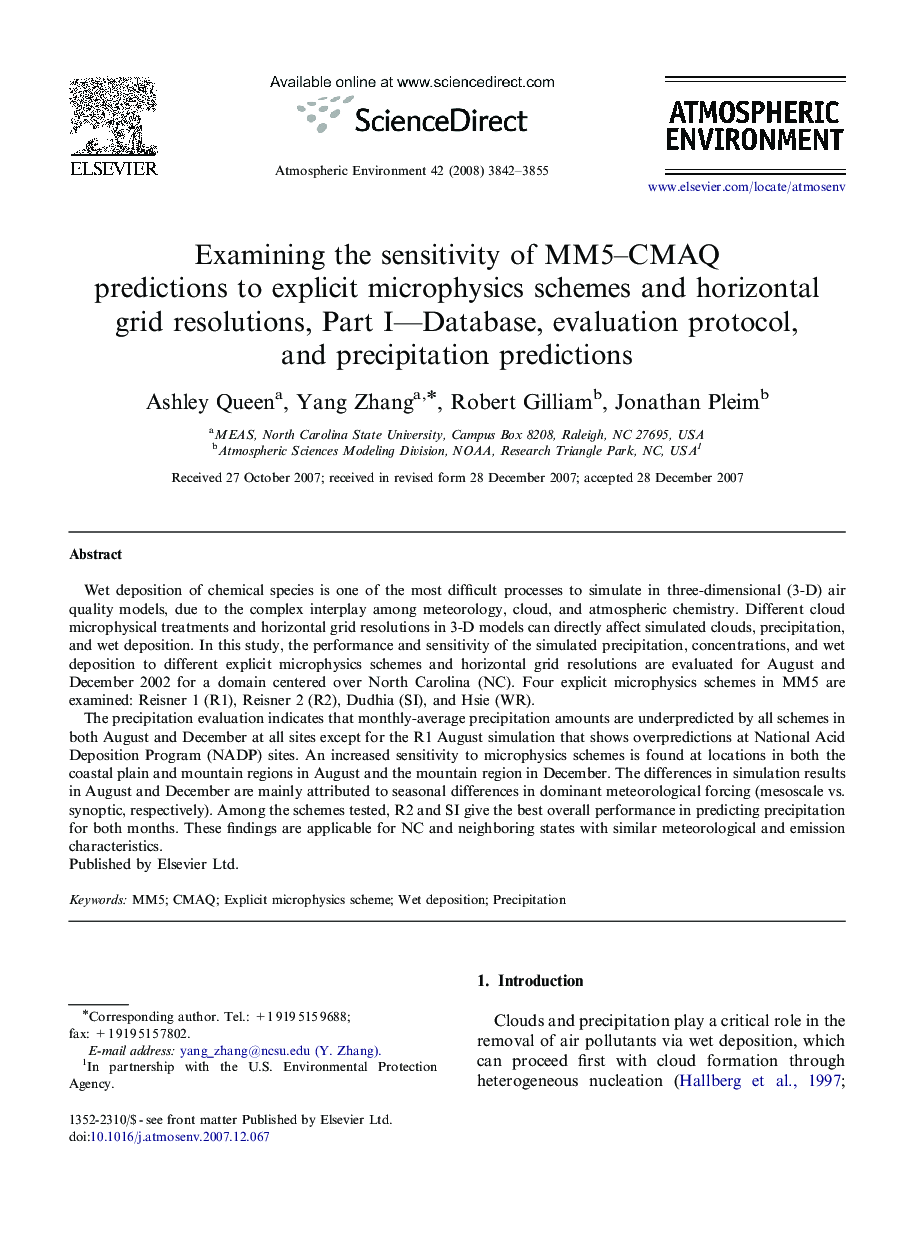| Article ID | Journal | Published Year | Pages | File Type |
|---|---|---|---|---|
| 4441925 | Atmospheric Environment | 2008 | 14 Pages |
Wet deposition of chemical species is one of the most difficult processes to simulate in three-dimensional (3-D) air quality models, due to the complex interplay among meteorology, cloud, and atmospheric chemistry. Different cloud microphysical treatments and horizontal grid resolutions in 3-D models can directly affect simulated clouds, precipitation, and wet deposition. In this study, the performance and sensitivity of the simulated precipitation, concentrations, and wet deposition to different explicit microphysics schemes and horizontal grid resolutions are evaluated for August and December 2002 for a domain centered over North Carolina (NC). Four explicit microphysics schemes in MM5 are examined: Reisner 1 (R1), Reisner 2 (R2), Dudhia (SI), and Hsie (WR).The precipitation evaluation indicates that monthly-average precipitation amounts are underpredicted by all schemes in both August and December at all sites except for the R1 August simulation that shows overpredictions at National Acid Deposition Program (NADP) sites. An increased sensitivity to microphysics schemes is found at locations in both the coastal plain and mountain regions in August and the mountain region in December. The differences in simulation results in August and December are mainly attributed to seasonal differences in dominant meteorological forcing (mesoscale vs. synoptic, respectively). Among the schemes tested, R2 and SI give the best overall performance in predicting precipitation for both months. These findings are applicable for NC and neighboring states with similar meteorological and emission characteristics.
